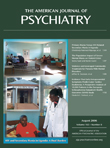Kaplan and Sadock’s Comprehensive Textbook of Psychiatry, Eighth Edition
The latest edition of this large book succeeds greatly in addressing those subjects that compose the field of psychiatry. The book is praiseworthy in defending psychiatry as a discipline while supporting its diversity.
The sections on the basics of science and medicine as they relate to the field of psychiatry are, perhaps, the most creditable, given the wealth of information that is currently available. The chapters on genetics and the immune system are also laudable. The following statement from the book is categorical: “Based on family, twin, and adoption studies, it is apparent that both genetic and environmental factors play important roles in the normal development of temperament, personality, and attitudes as well as in the pathogenesis of major mental disorders.”
The most enjoyable and interesting sections are those dealing with the most elusive psychiatric pursuit: normality. A convincing definition of normality seems all too important to the acceptance and direction of psychiatry. While less than definitive, the authors bring us closer to the truth and present convincing evidence and conclusions.
The chapters on psychiatric illnesses are concise, without excessive speculating. The psychotherapies presented are somewhat succinctly addressed, and it is not clear whether they are essential to psychiatrists and how they should be integrated into the biological treatises that seem to dwarf them. The discussions on drug treatment and child psychiatry, however, are broad. Geriatric psychiatry is given extended attention as well, although long-term care systems are not extensively addressed. Discussions on education and even a bit of anthropology are also presented.
The section entitled History of Psychiatry provides a good synopsis of the transformation of the field throughout the years. In imagining transforming possibilities, one task that might be essential is to convince the world that what psychiatry does works and to show how we know that it works.
This book succeeds! It is an excellent reference for any psychiatrist, nonpsychiatrist physician, psychologist, counselor, or anyone with an interest in the field. This two-volume guide with over 4,000 pages contains a lot of information to comprehend. Although the book has enormous strengths, one of its weak points is that it draws the field into a connected whole, without defining a clear delineation between psychiatry and other disciplines and without bringing a clear understanding of the legal, ethical, and moral never-never land that psychiatry faces.



